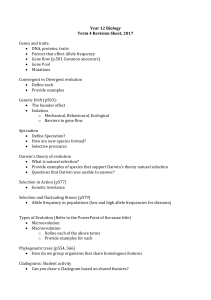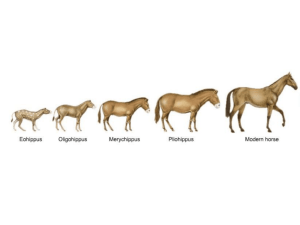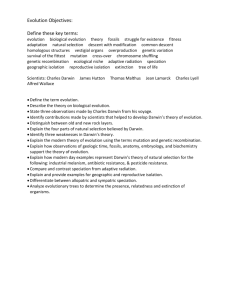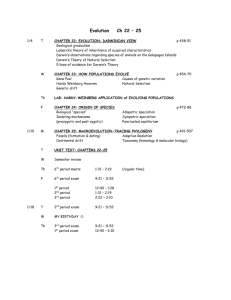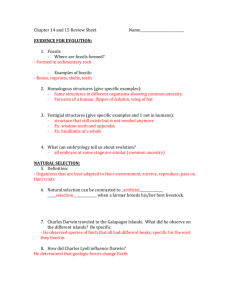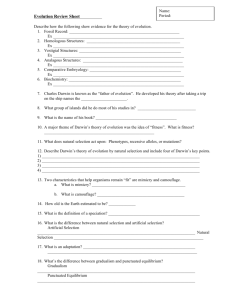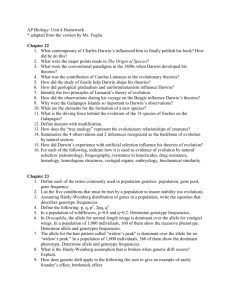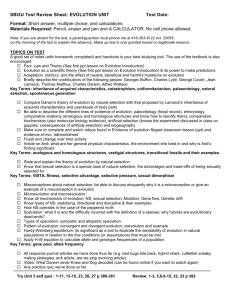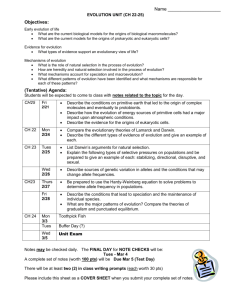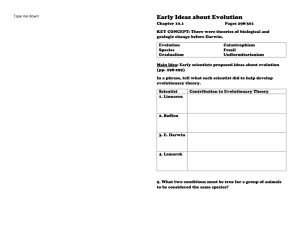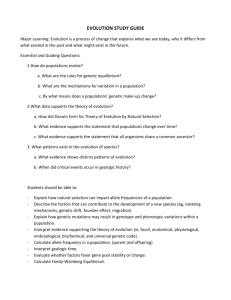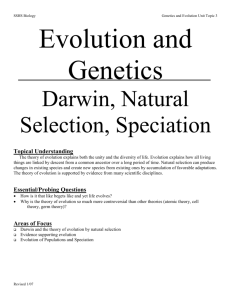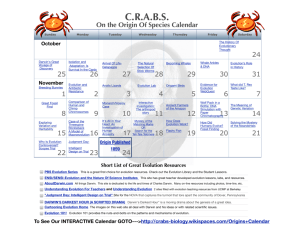Evolution Exam Review
advertisement
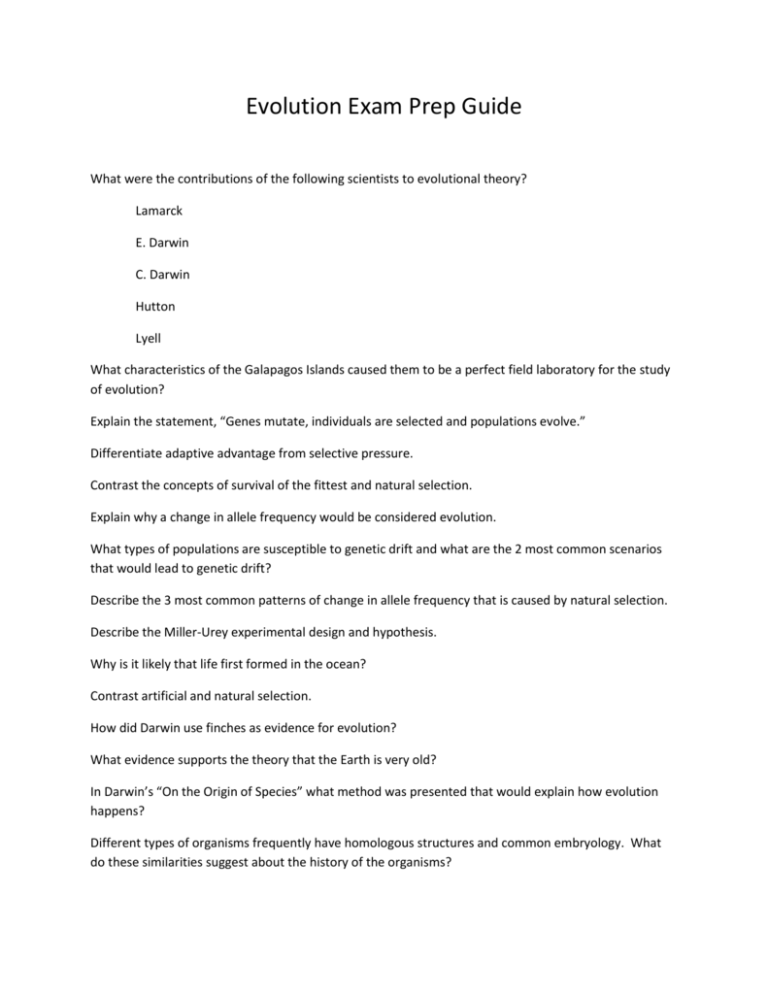
Evolution Exam Prep Guide What were the contributions of the following scientists to evolutional theory? Lamarck E. Darwin C. Darwin Hutton Lyell What characteristics of the Galapagos Islands caused them to be a perfect field laboratory for the study of evolution? Explain the statement, “Genes mutate, individuals are selected and populations evolve.” Differentiate adaptive advantage from selective pressure. Contrast the concepts of survival of the fittest and natural selection. Explain why a change in allele frequency would be considered evolution. What types of populations are susceptible to genetic drift and what are the 2 most common scenarios that would lead to genetic drift? Describe the 3 most common patterns of change in allele frequency that is caused by natural selection. Describe the Miller-Urey experimental design and hypothesis. Why is it likely that life first formed in the ocean? Contrast artificial and natural selection. How did Darwin use finches as evidence for evolution? What evidence supports the theory that the Earth is very old? In Darwin’s “On the Origin of Species” what method was presented that would explain how evolution happens? Different types of organisms frequently have homologous structures and common embryology. What do these similarities suggest about the history of the organisms? C. Darwin’s ideas about evolution are not that much different from earlier scientist/philosophers. What was it about his theory that made it vastly superior to earlier versions? As good as Darwin’s theory was it did have some holes. Describe the major flaws regarding the fossil record and heritability of traits. The geologic theory of gradualism was easy to adapt to biological evolution but there were problems. Which theory describes the rapid changes in extinction and speciation rates that have occurred numerous times? Calculate the frequency of the recessive allele in a population that has 20 homozygous dominant individuals, 24 heterozygous individuals and 18 homozygous recessive individuals. Explain why mutation in somatic cells does not contribute to genetic variation in a population. List 5 criteria that must be met for a population to reach Hardy-Weinberg equilibrium. Describe problems and benefits that come from inbreeding and hybridization. In order for speciation to occur reproductive isolation must exist. Describe 3 ways this can happen. Describe how fossils are formed. Describe how index fossils and radioisotopes can be used to determine the age of biological artifacts. What is the sequence of the 3 major geologic eras? What determines the start and stop time for geologic periods? How did the earth’s atmosphere change from a toxic blend of gasses to the nitrogen/oxygen mixture that we have today? Describe the theory that explains the method by which eukaryotes evolved from prokaryotes. Why is the ozone layer in the lower stratosphere important to the formation of life on land?
